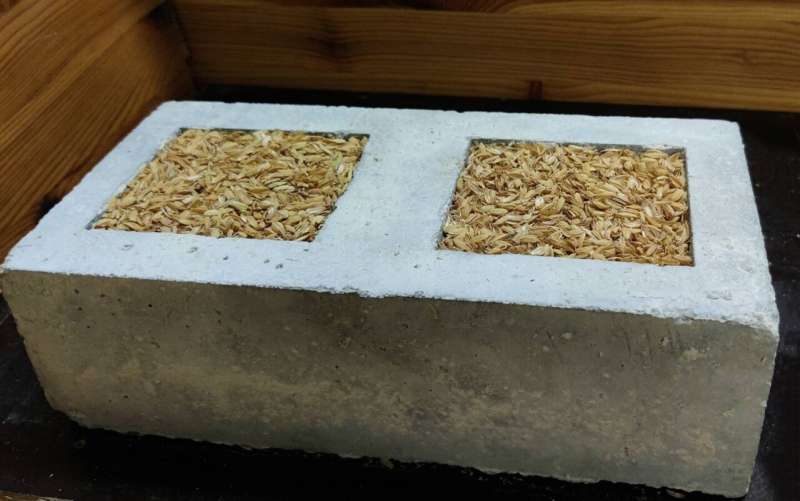
When it comes to sustainable development, the construction industry faces great challenges. In the ReMatBuilt project, experts from the Fraunhofer Institute for Wood Research, Wilhelm-Klauditz-Institut, WKI and their partners are proving that the tasks associated with this can be solved with high-performance construction materials made of recycled and waste materials. They presented their solutions to specialist audiences at the Hannover Messe Preview on February 21, 2024.
Anyone who leaves their house now often finds themselves in the middle of noisy demolition or construction and building sites impact our everyday lives, especially in metropolitan areas. It is therefore not difficult to understand that the construction industry is one of the world's largest consumers of natural resources. At the same time, the demolition of existing buildings and structures produces masses of materials that urgently need to be recycled solely from a sustainability perspective.
These are the neuralgic points from which Professor Libo Yan and his team from Fraunhofer WKI start. In the ReMatBuilt research project, the experts are developing sustainable concrete construction materials and high-performance construction elements based on construction and demolition waste as well as plant-based production residue, together with partners from industry and science.
The project partners based in Germany and China place special emphasis on practicability and quick implementability: On the one hand, as an international team, they want to take global responsibility for bio-based, sustainable economic development and identify suitable recycling and production methods for the construction sector. On the other hand, they design the resulting products and all upstream process steps in such a way that these meet the country-specific regulations. The solutions developed under these guidelines can be used easily and thus significantly increase the share of renewable raw materials in the construction industry on a global level.
"The idea of recycling construction materials and experimenting with alternative materials from nature is not new. What makes our project unique is its holistic approach," project manager Yan explains. "We combine our knowledge of the methods and properties of the different materials in order to understand their chemical, physical and mechanical performance from the micro- to the macro-scale. This allows us to achieve a very high technology readiness level, which is an important aspect for practical application."
Less waste, lower resource consumption
When the conventional manufacturing and composition of construction materials is compared with those that the ReMatBuilt project partners are realizing, the multiple advantages of their approach quickly become clear: The experts use so-called construction rubble, in other words, old concrete and masonry waste, as well as agricultural residues to produce recycled concrete. These components are reinforced with plant-based natural fibers such as flax, supplemented by forestry waste products such as wood chips from old wood.
Conventional concrete, in contrast, contains cement and usually gravel as an aggregate. The latter is a finite resource as an aggregate, and its extraction damages the environment. In addition, it often has to be transported over long distances. Construction rubble and old wood, however, are extensively found in large amounts throughout the world in the relevant areas and have been hardly used so far. From an ecological and economic point of view, this is a very attractive substitute.
The situation is similar with cement. This binding agent among the construction materials is made from natural raw materials such as limestone, clay and quartz sand—and its production causes high carbon dioxide emissions that have been an increasing concern for the industry. The team headed by Professor Yan has succeeded in identifying a substitute material that is more than adequate: "Rice is the most common food in the world. Its husks have hardly ever been used. We have found out that the rice husk ash that is produced by a special combustion process is optimally suited as a cement substitute."
Citation: How residual materials can become high-performance construction products (2024, February 22) retrieved 22 February 2024 from https://techxplore.com/news/2024-02-residual-materials-high-products.html
This document is subject to copyright. Apart from any fair dealing for the purpose of private study or research, no part may be reproduced without the written permission. The content is provided for information purposes only.
